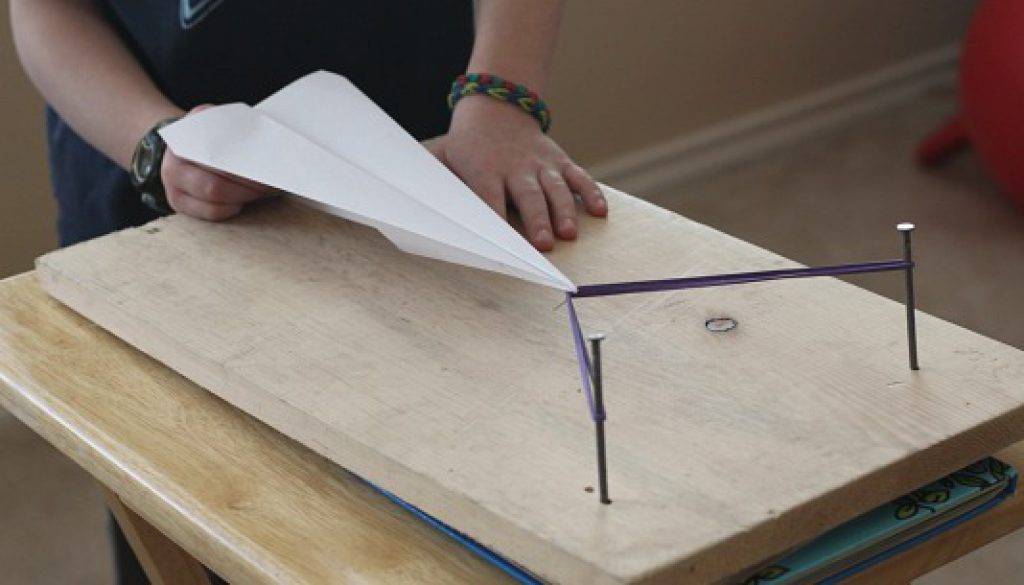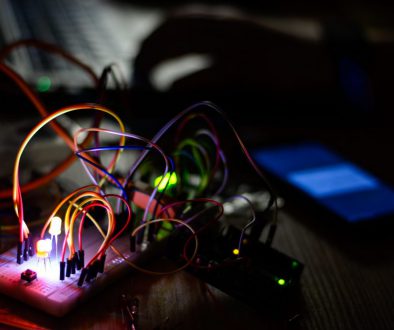This DIY Paper Airplane Launcher Will Be Too Much Fun
School’s out – are your kids bored yet? This DIY paper airplane launcher isn’t just a fun activity. It’s a great “launching” off point for some awesome science experiments.
Over on Frugal Fun for Boys and Girls, Sarah Dees shares how her boys created a homemade paper airplane launcher.
My boys love anything that can launch or fling items, and this homemade paper airplane launcher really fits the bill! It’s easy to build and will take ordinary paper airplanes to a whole new level. Very fun for a stuck-indoors sort of day, and building and testing the planes involves all kinds of science, so it would make a great scouting or school activity as well.
The design is simple: stick two nails in a board, then add a rubber band. Add a paperclip to the paper airplane, and you’re ready to go.

We love the simplicity of the design! But as scientists, we can’t help but wonder: can we experiment with the design? And how does that affect how planes fly?
As we see in the Crash Test experiment, our sensor kit adds an element of data gathering to the airplane launcher. And, just like real scientists, your kids could have a lot of fun testing variables and trying to get the fastest/farthest flying/most fun plane.
Simply set up the sensor kit like in the Crash Test, then gather data to compare. Here are just a few things your kids could test:
- Could the launcher design be improved? Which design works best?
- How far can the planes go?
- How fast do the planes go? What makes planes go faster or slower?
- Does changing the angle affect how fast the planes go? What about how far they go?
- How does changing the plane design affect speed?
Try setting up the sensor kit to gather data, then run these tests. It’s a great way to help your kids transfer what they’re learning in the classroom about science to the real world, setting them up for a lifetime of critical thinking.
Get your Ardusat sensor kit here, and check out the original Paper Airplane Launcher instructions!




